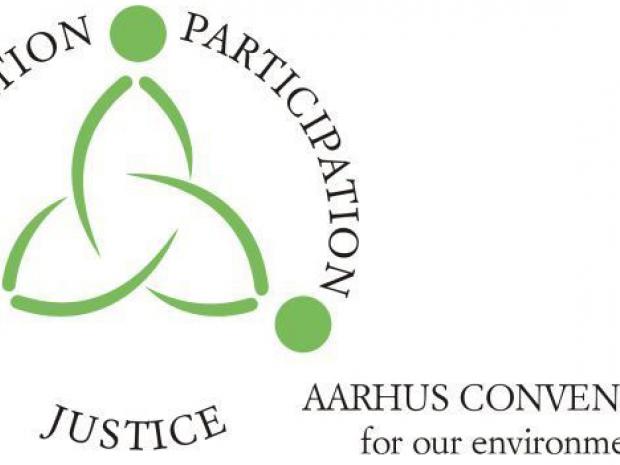Convention on Access to Information, Public Participation in Decision-Making and Access to Justice in Environmental Matters (Aarhus, 1998), UNECE

The UNECE Convention on Access to Information, Public Participation in Decision-making and Access to Justice in Environmental Matters was adopted on 25th June 1998 in the Danish city of Aarhus at the Fourth Ministerial Conference in the 'Environment for Europe' process.
The Aarhus Convention is a new kind of environmental agreement. The Convention:
- Links environmental rights and human rights
- Acknowledges that we owe an obligation to future generations
- Establishes that sustainable development can be achieved only through the involvement of all stakeholders
- Links government accountability and environmental protection
- Focuses on interactions between the public and public authorities in a democratic context.
The subject of the Convention goes to the heart of the relationship between people and governments. The Convention is not only an environmental agreement, it is also a Convention about government accountability, transparency and responsiveness.
The Aarhus Convention grants the public rights and imposes on Parties and public authorities obligations regarding access to information and public participation and access to justice.
The Aarhus Convention is also forging a new process for public participation in the negotiation and implementation of international agreements.
Content
General features
Access to information
Public participation
Access to justice
Content of the Convention
As its title suggests, the Convention contains three broad themes or 'pillars': access to information, public participation and access to justice. However, the Convention also contains a number of important general features.
General Features
Rights-based approach: The Convention adopts a rights-based approach. Article 1, setting out the objective of the Convention, requires Parties to guarantee rights of access to information, public participation in decision-making and access to justice in environmental matters. It also refers to the goal of protecting the right of every person of present and future generations to live in an environment adequate to health and well-being, which represents a significant step forward in international law. These rights underlie the various procedural requirements in the Convention.
A 'floor', not a 'ceiling': The Convention establishes minimum standards to be achieved but does not prevent any Party from adopting measures which go further in the direction of providing access to information, public participation or access to justice.
Non-discrimination: The Convention prohibits discrimination on the basis of citizenship, nationality or domicile against persons seeking to exercise their rights under the Convention.
Definition of public authorities: The main thrust of the obligations contained in the Convention is towards public authorities, which are defined so as to cover governmental bodies from all sectors and at all levels (national, regional, local, etc.), and bodies performing public administrative functions.
Although the Convention is not primarily focused on the private sector, privatised bodies having public responsibilities in relation to the environment and which are under the control of the aforementioned types of public authorities are also covered by the definition. Bodies acting in a judicial or legislative capacity are excluded.
Inclusion of institutions of the European Union (the EU): The definition of 'public authority' also covers the institutions of regional economic integration organisations which become a Party to the Convention. The European Union (which as of 1 December 2009 succeeded the European Community in its obligations arising from the Convention) has ratified the Convention (decision 2005/370/EC) and is a Party since 18 May 2005. Therefore, the provisions of the Convention apply to the EU institutions, including inter alia the European Commission, the Council and European Environment Agency.
International bodies: Apart from the special case of regional economic integration organisations such as the EU, the Convention contains a more general requirement on Parties to promote the application of its principles within the framework of international bodies in matters relating to the environment.
While the wording is not particularly strong, the inclusion of this provision shows some recognition of the need to prevent any loss of transparency and public accountability as decision-making moves onto an international level.
Non-compliance mechanism: The Meeting of the Parties to the Convention is required to establish, on a consensus basis, optional arrangements for reviewing compliance with the provisions of the Convention. Such arrangements are to allow for 'appropriate public involvement'.
Non-ECE countries: Finally, the Convention is open to accession by non-ECE countries, subject to approval of the Meeting of the Parties.
This presentation was taken from the United Nations Economic Commission for Europe website.
You can find more information on : www.unece.org
Log in with your EU Login account to post or comment on the platform.